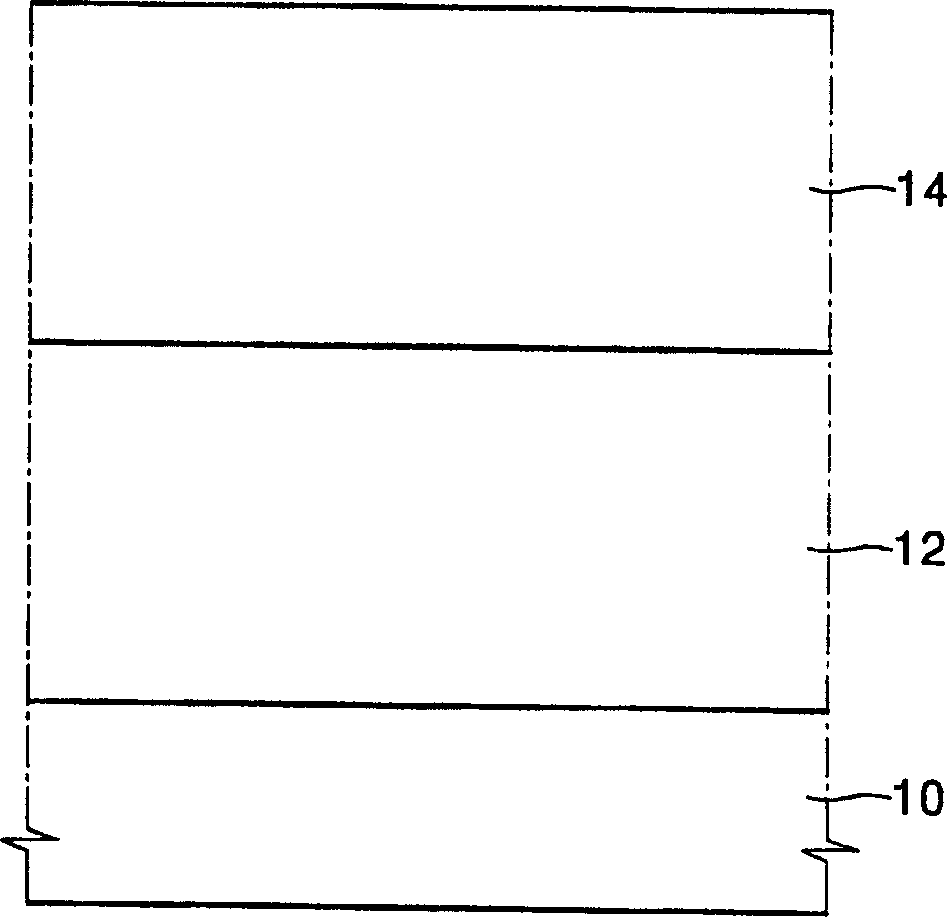Barrier coating compositions for photoresist and methods of forming photoresist patterns using the same
A composition and photoresist technology are applied in the field of barrier coating compositions for photoresist and the use of the composition to form photoresist patterns, which can solve problems such as damage to photoresist properties, contamination of lenses, and the like, and achieve The effect of reducing material cost, simplifying manufacturing process, and reducing manufacturing cost
- Summary
- Abstract
- Description
- Claims
- Application Information
AI Technical Summary
Problems solved by technology
Method used
Image
Examples
example 1
[0064] example 1. Polymerized silicon-containing polymers (1)
[0065]
[0066] In a round bottom flask, 4.3 g (10 mmol) of tris(trimethylsiloxane) silypropyl methacrylate (obtained from Aldrich Chemical), 0.5 g (5 mmol) of methacrylic acid and 5 mol% of azobisisobutyronitrile (AIBN) was dissolved in 20 ml of anhydrous THF and then purged with nitrogen. The mixture was then polymerized under nitrogen at a temperature of about 65°C for 24 hours.
[0067] After polymerization, the polymeric material was precipitated in excess water and filtered. The polymerized retentate was then dried in a vacuum oven at a temperature of about 50° C. for 24 hours. The calculated polymerization yield was 70%, and the resulting polymeric material exhibited a weight average molecular weight (Mw) of 14,800 Daltons and a polydispersity (Mw / Mn) of 1.8.
example 2
[0068] Example 2. Polymerized silicon-containing polymers (2)
[0069]
[0070] In a round bottom flask were placed 4.3 grams (10 mmol) of tris(trimethylsiloxy) silypropyl methacrylate (obtained from Aldrich Chemical), 0.5 grams (3 mmol) of methacrylic acid, 4.0 g (3 mmol) of 2-hydroxyethyl methacrylate and 5 mol% of AIBN were dissolved in 35 ml of anhydrous THF and purged with nitrogen. The mixture was then polymerized at a temperature of about 65° C. for 24 hours under nitrogen.
[0071] After polymerization, the polymeric material was precipitated in excess water and then filtered. The polymer retentate was then dried in a vacuum oven at a temperature of about 50°C for 24 hours. The calculated polymerization yield was 75%, and the resulting polymeric material exhibited a weight average molecular weight (Mw) of 12,500 Daltons, and a polydispersity (Mw / Mn) of 1.8.
example 3
[0072] Example 3. Polymerized silicon-containing polymers (3)
[0073]
[0074] In a round bottom flask were placed 4.3 grams (10 mmol) of tris(trimethylsiloxy) silypropyl methacrylate (obtained from Aldrich Chemical), 1.3 grams (13 mmol) of maleic anhydride, 0.3 g (3 mmol) of methacrylic acid and 4 mol of AIBN were dissolved in 10 ml of anhydrous THF, then purged with nitrogen. Next, the mixture was polymerized under nitrogen at a temperature of about 65° C. for 24 hours.
[0075] After polymerization, the polymeric material is precipitated in excess water and then filtered. The polymer retentate was dried in a vacuum oven at a temperature of about 50°C for 24 hours. The calculated polymerization yield was 45%, and the resulting polymeric material exhibited a weight average molecular weight (Mw) of 8,500 Daltons and a polydispersity (Mw / Mn) of 2.0.
PUM
| Property | Measurement | Unit |
|---|---|---|
| weight | aaaaa | aaaaa |
| molecular weight | aaaaa | aaaaa |
| molecular weight | aaaaa | aaaaa |
Abstract
Description
Claims
Application Information
 Login to View More
Login to View More - R&D
- Intellectual Property
- Life Sciences
- Materials
- Tech Scout
- Unparalleled Data Quality
- Higher Quality Content
- 60% Fewer Hallucinations
Browse by: Latest US Patents, China's latest patents, Technical Efficacy Thesaurus, Application Domain, Technology Topic, Popular Technical Reports.
© 2025 PatSnap. All rights reserved.Legal|Privacy policy|Modern Slavery Act Transparency Statement|Sitemap|About US| Contact US: help@patsnap.com



